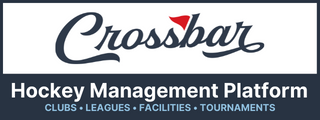
Goalie Guidance From a Pro
By Scott Lowe & Bill Zaniboni
Since taking over as MHR Director of Digital Media last September I’ve posted one or two articles a week covering various hockey-related topics. Hopefully many of you found at least some of the content helpful as you navigate your youth hockey journey. During the last eight weeks the number of posts has increased to three or four per week. We’ve got nothing but time, right?
But there really hasn’t been anything written specifically for goalies, and there’s a reason for that.
I know very little about goaltending.
Over the years, having attended so many showcases and tryout camps I’ve often wondered how coaches and scouts can evaluate 15 or more goalies over a three- or four-day period and tell which one is the best – especially when all of them appear to be pretty solid.
It can be easy to see if a goalie simply doesn’t belong, and when a goalie is off-the-charts good I think that’s usually pretty evident as well. But trying to pick two or three guys out of a group of 15 kids who were No. 1 goalies for their AAA or junior teams? Good luck!
Even with the showcase teams I have assembled over the years I try to spread out the opportunities so all of the interested goalies get to play in at least one event each spring and summer instead of trying to choose the best two for each tournament. And on the rare occasions when we’ve had to choose the best two, I’ve tried my best to defer to people with more knowledge of the position than I possess – which is just about everybody.
One thing I can tell you with absolute certainty, however, is that the process of picking two kids for our St. Louis high-school showcase team and two goalies for our younger Hockey Night in Boston teams – when those are the only teams we offer below the 16U level – out of so many interested and deserving tenders can be agonizing.
Sometimes it’s so hard to figure out that we defer to the older player and give him the opportunity since the younger player can come back and play the following year. In some ways that’s the fairest way we can approach the situation, but tell that to the younger guy who knows he’s probably just as good – and maybe better – than the older kid.
Truth be told, though, I’d really like to learn more about the position and understand better what it takes to play at the highest levels and what scouts are looking for when 15 really good goalies are competing for two or three spots and need to be separated by their performance and potential.
I’d also like to be able to do more to help young goalies through my writing and by providing advice and recommendations that help them advance. I often feel badly that I haven’t really produced much – or any – content specifically for netminders.
So, with more free time on my hands than usual, I’ve decided to start the wheels in motion and begin learning more about goaltending so I can pass that knowledge along to whomever might be interested.
The first step in that process is finding an actual goaltending expert who is willing – and has enough patience – to help me learn.
Fortunately, over the years I have built a great network of college, junior and AAA coaches who often need players for showcase teams or their regular-season teams, and that gives me an opportunity to recommend goalies who are looking to advance and need exposure.
At least I’m able to help some more young goalies out that way. And now I’m hoping that by asking for help from my network I will also be able to learn more about the position that I can pass along to goalies and families of goalies everywhere through my writing.
For this first piece I reached out to my friend Bill Zaniboni, to be known as Coach Z from this point on. He is the head coach for the Seahawks Hockey Club Eastern Hockey Leauge junior team. Coach Z also was an NCAA Division I goalie who played at Northern Michigan University before spending six years competing in various professional leagues. He also played in the USHL and NAHL and is very familiar with what It takes for a goalie to play at every rung of the development ladder.
As a junior hockey coach, Coach Z has earned coach-of-the-year honors several times in various leagues, including in the EHL for the 2018-19 season. In just a few seasons he has molded the Seahawks into a perennial playoff team and championship contender in the toughest division of the EHL. Coach Z sends numerous players on to play NCAA Division III hockey every year.
Since he’s the expert, I’m going to write the rest of this story in his exact words.
Here are Coach Z’s thoughts on the following topics:
Recruiting Players Right Now in General for the EHL – and Goalies Specifically
Things are definitely different right now when it comes to recruiting all players, and the goalie position is no different. Video and references are the biggest thing I’m looking at. No coach wants to watch a highlight tape, I think, especially for goalies. Coaches need to see the play develops in front of the goalie, which you can still see on film. They want to see how well they track pucks into and off their bodies and if they can eliminate second and third chances. One of the biggest things that is not seen on video is just the calmness, control and communication you want out of the guys logging the minutes in net.
What Stands Out First and Where Do We Go From There?
First and foremost, does the goalie stop the puck, and can he manage the game to benefit his team by controlling the clock and tempo? I think from there, with my background as a goalie, I look at his footwork and his ability to control shots to help eliminate second chances. One of the biggest things I look for in this age of technical goalies is the player’s compete level for pucks and space.
What Sets a Goalie Apart from One Level to the Next?
When it comes to separating for goalies, it’s pretty much the same as with skaters. The player who can see things develop and perform at a high pace more consistently pulls away from the pack. This happens at every level you move up to as the game continues to get harder. Advancement has a lot of factors.
Philosophy of Recruiting Goalies in Terms of Allocating Time
I personally prefer to have a two-goalie system. For a team to be competitive, every position needs to be a competition. The thing a lot of players don't understand is that they put themselves into the spot they have earned. If I bring a third goalie in, his role is to be a great teammate, to get on the ice early and to be off the ice last, helping guys work on extra skills. This makes the players better, but also makes the goalie better; the extra work should put him in a position to be very successful the following year.
The Importance of Body Language and Communication
Body language flows from all the previous topics and is something most coaches look at very closely. If you have good body language, you are usually very engaged in what you are doing. It shows that you care about the success of the group, which forces you to communicate in a positive way to help the team be successful. If you are communicating on and off the ice, you are building a bond of trust that will contribute significantly to the success of your team throughout the year.
What Do You Look for From a Goalie When Watching Video?
Video is such an essential tool when it comes to recruiting every year, but this year it has been much more of a focus than usual. Goalies should send clips that show the puck crossing the blue line and coming into the zone. This allows me to see the goalie’s movement at all times, how he follows pucks and reads situations as the puck is approaching him, how he plays the puck and the save that results from his approach to the situation.
What Do Goalies Generally Need to Do to Prepare for the First Year of Juniors?
Confidence is a really big thing, and there is a difference in saying that you are confident and actually playing with confidence. Goalies play with confidence by being prepared – working on their techniques, breaking down their own video, making sure they are critical but still ending things on a positive note, etc. They need to find solutions that will help them understand situations, see them developing and build the confidence to make the save when a situation presents itself in the future. It’s also important to find a team and coach that really wants you, as having the trust of the coach and teammates plays a large in a goalie’s confidence.
What Can Goalies Do Right Now to Get Better Given the Restrictions
In general, goalies need to be lean. Plyometrics and quick-thinking drills are great to be doing during this time. At home,, goalies can do yoga to work on balance and develop core strength. Flexibility, core strength and leg strength are all things that good goalies possess.
Coach Bill Zaniboni: Coach.Zaniboni@gmail.com

